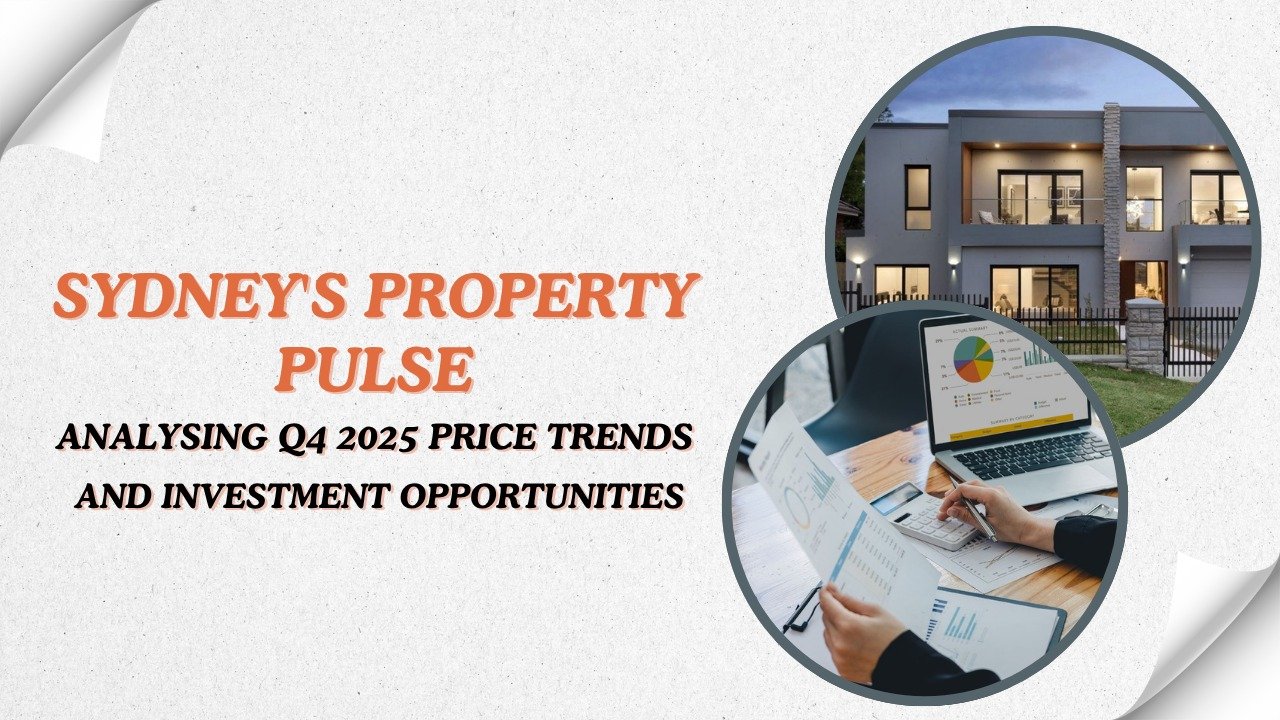Let’s talk about one of the biggest challenges in property...
Read MoreNewsfeed
Share Article
Categories/Tags
Register To Our E-News
Latest News
The Power of Research: How Commercial Property Analysis Uncovers Hidden Gems
Walk down any major city street in Australia, and you’ll...
Read MoreTop 5 Data-Driven Real Estate Investment Strategies for 2025
Let’s be honest: the days of buying any property and...
Read MoreAustralian Property Price Trends: A National Overview for Investors
Trying to get a clear read on the Australian property...
Read MoreSydney’s Property Pulse: Analysing Q4 2025 Price Trends and Investment Opportunities
Let’s be honest, trying to pin down the Sydney house...
Read More
Property Managed Funds Demystified: A Smart Path to Portfolio Diversification
Let’s talk about one of the biggest challenges in property investing: putting all your eggs in one basket. You’ve worked

The Power of Research: How Commercial Property Analysis Uncovers Hidden Gems
Walk down any major city street in Australia, and you’ll see them: commercial properties. The office tower, the neighbourhood shopping

Top 5 Data-Driven Real Estate Investment Strategies for 2025
Let’s be honest: the days of buying any property and watching its value skyrocket are long gone. Today’s property market

Australian Property Price Trends: A National Overview for Investors
Trying to get a clear read on the Australian property market can feel like trying to predict the weather in

Sydney’s Property Pulse: Analysing Q4 2025 Price Trends and Investment Opportunities
Let’s be honest, trying to pin down the Sydney house price market can feel like trying to predict the weather.

How to Invest with a Property Fund: A Step-by-Step Guide to Getting Started
You’ve decided that direct property investment—the 3am plumbing emergencies, the tenant dramas, the sheer concentration of capital—isn’t for you. But
Industry
Building a Resilient Portfolio: Top Property Investment Strategies for the Current Market
-
Real Estate Science

Let’s be honest: the property market headlines can be exhausting. One day, prices are soaring; the next, we’re bracing for a correction. For investors, this noise can be paralyzing. But what if you could block out the short-term static and focus on building something durable?
In a market defined by uncertainty, the goal isn’t to time the market perfectly. The goal is to build a portfolio that can withstand its ups and downs. This isn’t about getting rich quick; it’s about getting resilient for the long term. And that all starts with a robust, intentional property investment strategy.
A resilient portfolio acts like a well-built ship in a stormy sea—it might get rocked, but it won’t sink. So, how do you build one? Let’s dive into the key strategies that can help you fortify your investments for the current climate and beyond.
1. Diversify Beyond Your Postcode: The “Don’t Put All Your Eggs in One Basket” Rule
This is the golden rule of investing, yet in property, we often break it. We fall in love with a suburb or a city and pour all our capital into it. But what if that specific local economy takes a hit?
A resilient property investment strategy involves spreading your risk. Think beyond a single asset type or location.
- Geographic Diversification: Consider assets in different cities or states. While the Sydney market might be cooling, Perth or Adelaide could be showing strength. This balances your exposure to localised economic downturns.
- Sector Diversification: Don’t just focus on residential. Explore the different risk-return profiles of industrial, retail, or commercial property. For instance, the boom in e-commerce has created strong tailwinds for the industrial and logistics sector, which can be a great counterbalance to a softening residential market.
The Australian Bureau of Statistics (ABS) is a fantastic resource for comparing economic and demographic data across different regions.
2. Focus on Fundamentals, Not Fads
In a speculative frenzy, it’s easy to get swept up in the “next hot spot.” Resilience, however, is built on boring, time-tested fundamentals.
- Employment Hubs: Invest in areas with strong, diverse, and growing employment bases. Look for proximity to major hospitals, universities, government departments, and corporate headquarters. Jobs attract people, and people need a place to live and work.
- Infrastructure Pipelines: Follow the government’s money. New transport links, roads, and public facilities are long-term commitments that boost connectivity, liveability, and ultimately, property values.
- Population Trends: Are young families moving in? Is the area gentrifying? Strong demographic tailwinds provide a steady, organic demand for property.
This fundamental analysis is the bedrock of a sound property investment strategy. It’s about choosing a property that people will always want to live in or a business will always want to operate from, regardless of the interest rate cycle.
3. Prioritise Cash Flow Resilience
Capital growth is the dream, but cash flow is the reality that pays the bills. In a higher interest rate environment, ensuring your investment can comfortably cover its own costs is non-negotiable.
- Stress-Test Your Numbers: When crunching the numbers, don’t just use current interest rates. Model your cash flow at 2-3% higher. Can it still hold up?
- Look for Value-Add: Sometimes, resilience is something you create. Could a minor renovation allow you to charge higher rent? Could subdividing a large block create a new income stream? A strategic value-add can significantly boost your yield and create a buffer against market fluctuations.
- Secure Long-Term Leases: For commercial investments, a long-term lease with a strong tenant (a good “tenant covenant”) provides predictable, stable income.
4. Adopt a Long-Term Mindset (The “Time in the Market” Philosophy)
Market timing is a fool’s errand. Trying to buy at the very bottom and sell at the very peak is incredibly difficult, even for the pros. Resilience comes from a long-term perspective.
Property is a long-duration asset. It’s normal for markets to go through cycles of growth, stability, and correction. A long-term property investment strategy allows you to ride out the downturns and compound your wealth through the upswings. Think in terms of 10-year cycles, not 10-month flips.
5. Embrace a Scientific, Data-Driven Approach
The biggest enemy of resilience is emotion. Buying based on fear of missing out (FOMO) or selling in a panic are the two fastest ways to undermine your portfolio.
The solution is to replace emotion with a disciplined, data-driven process. This means:
- Using Market Data: Relying on core metrics like vacancy rates, rental growth, and days on market.
- Conducting Due Diligence: Never skipping building inspections, strata reports, or legal reviews.
- Sticking to Your Criteria: Having a clear set of rules for what makes a good investment and refusing to deviate from them, no matter how enticing a listing might seem.
This scientific approach is what separates professional investors from amateurs. It’s the ultimate tool for building and maintaining a resilient portfolio.
Bringing It All Together: You Don’t Have to Go It Alone
For many investors, implementing these strategies alone can feel daunting. How do you diversify significantly with limited capital? How do you access the deep data needed for fundamental analysis?
This is where exploring alternative paths can be a game-changer for your property investment strategy. At Real Estate Science Fund, we are built on the principles of resilience. Our approach is designed to give investors access to a professionally selected, diversified portfolio of property assets, all underpinned by rigorous, scientific research. <a href=”https://realestatesciencefund.com.au/”>Learn more about how we build resilience into our investment philosophy here</a>.
The Final Brick in Your Foundation
Building a resilient property portfolio in today’s market is entirely achievable. It requires a shift in focus—from chasing short-term gains to implementing a long-term, disciplined property investment strategy centred on diversification, fundamentals, cash flow, and data.
By adopting these principles, you’re not just buying properties; you’re building a fortress for your wealth, designed to stand strong through whatever the market throws its way.
Disclaimer: This blog post contains general information only and does not constitute financial or investment advice. You should consider seeking independent legal, financial, taxation or other advice to check how the information relates to your unique circumstances.



